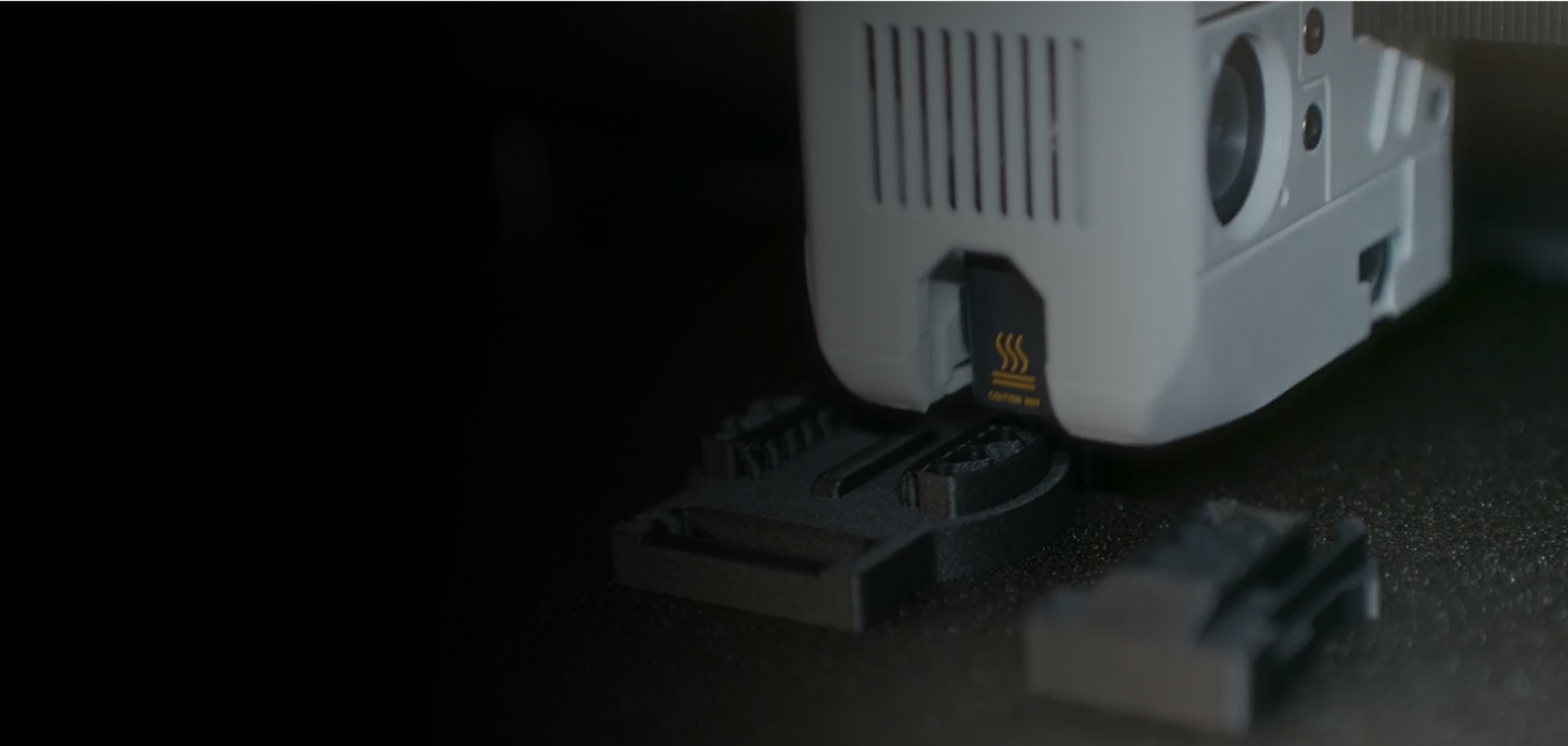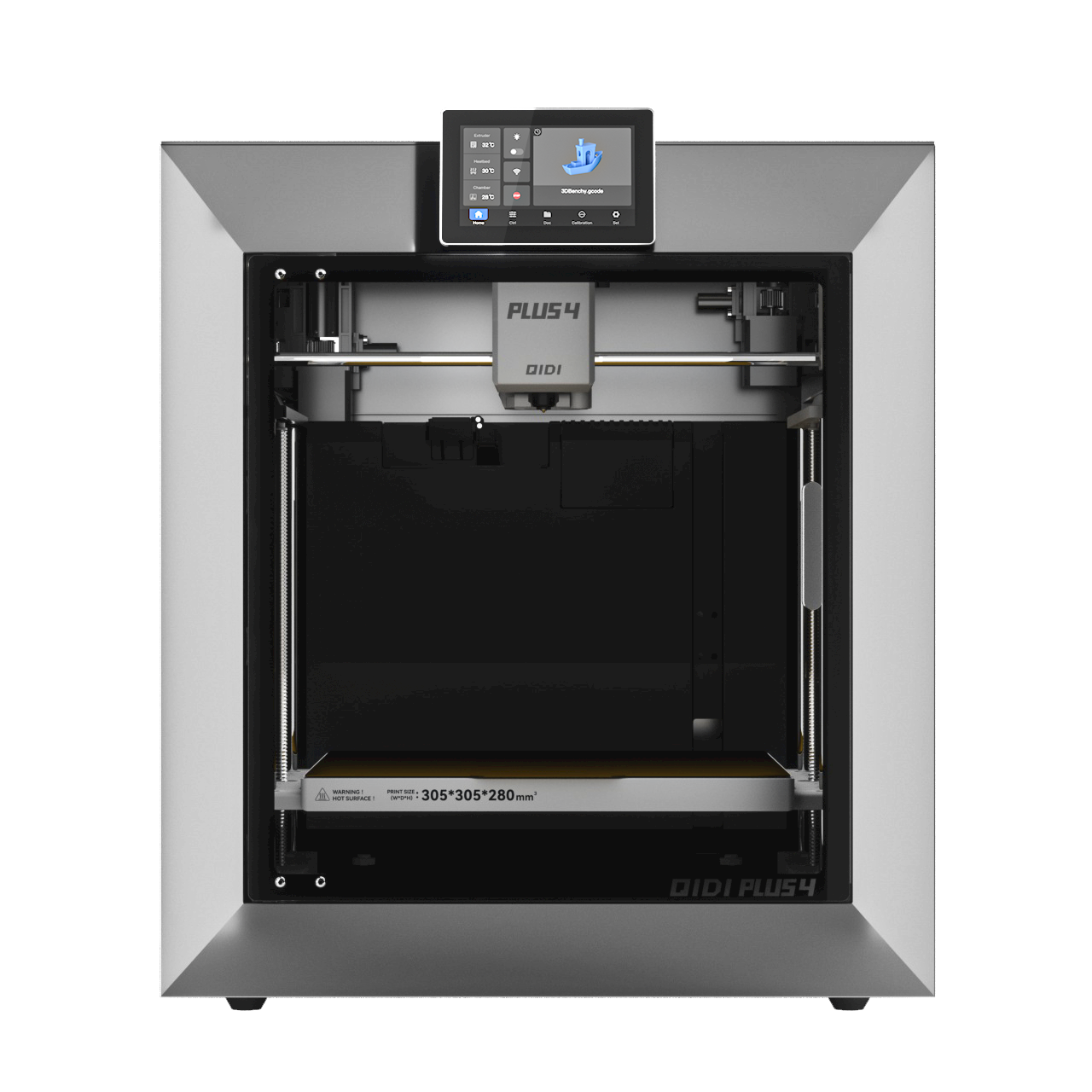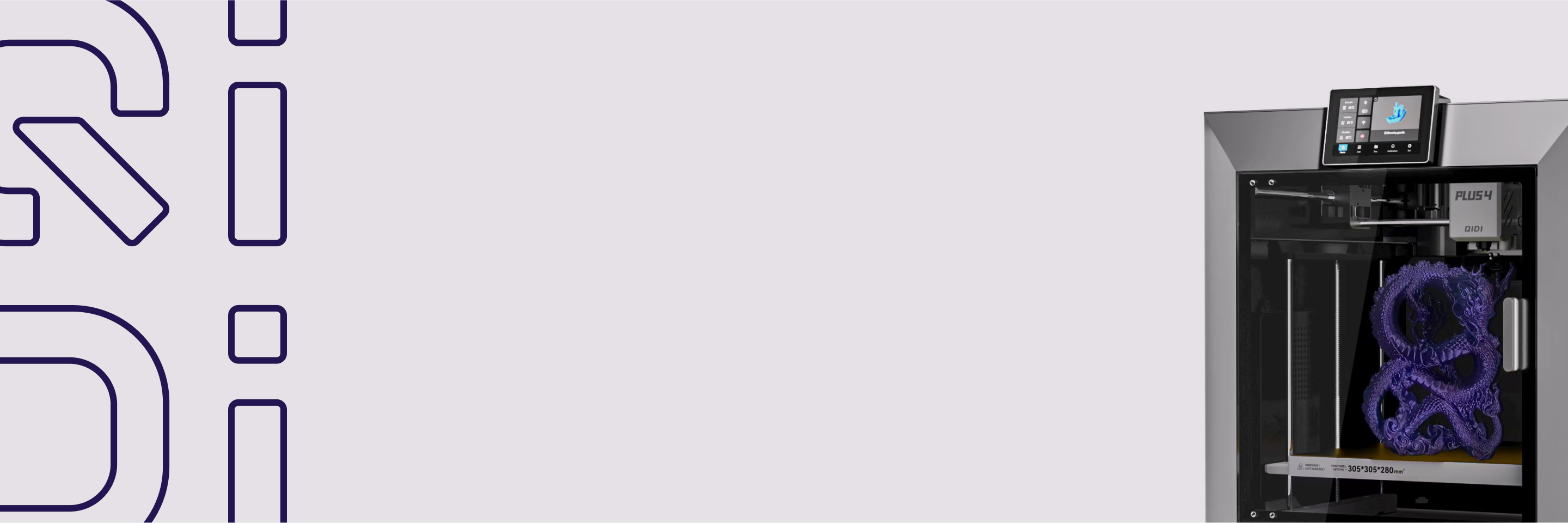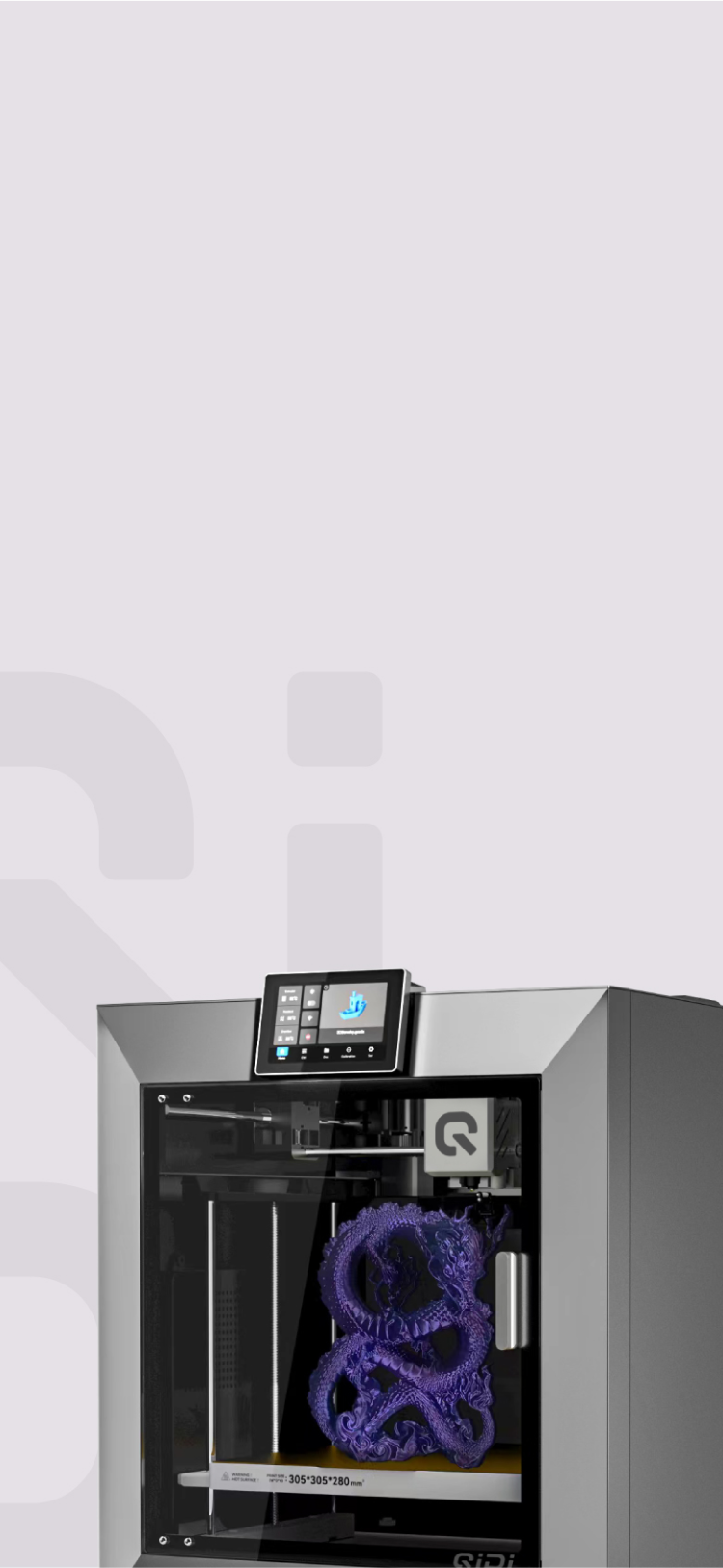Why Your First 3D Printer Should Have Automatic Bed Leveling


There’s nothing more frustrating in 3D printing than the sight of a failed print. You wait patiently, only to return to your 3D printer and find a tangled mess of plastic spaghetti instead of your creation. More often than not, this common problem can be traced back to one single, critical step: leveling the print bed. For years, this was a manual ritual of tinkering and guesswork. Today, modern technology offers a powerful solution. This guide explains what automatic bed leveling is and why this single feature is one of the most important advancements for anyone involved in 3D printing.
What is Manual Bed Leveling and Why is it so Frustrating for 3D Printing?
To appreciate today’s solution, it is helpful to first understand the problem it solves. Manual bed leveling is the process of physically adjusting the print surface to ensure it is perfectly parallel to the nozzle's path of travel. For most machines, this involves a process that users often call the "four-corner dance."
The Frustrating Process
- Endless Adjustments: You typically have to move the nozzle to each corner of the bed and manually turn large knobs or thumbscrews underneath.
- The Subjective Paper Test: The most common method involves sliding a piece of A4 paper between the nozzle and the bed, trying to feel for a "slight drag." This feeling is inconsistent and varies from person to person.
- Repetitive Cycle: Because adjusting one corner slightly affects the others, you often have to repeat the entire process multiple times to get it right.
The Unfortunate Results
This challenging, repetitive, and imprecise task is the number one reason beginners struggle. A tiny error, less than the thickness of that paper, directly leads to:
- Poor First Layer Adhesion: Prints coming loose from the bed mid-print.
- Warping and Curling: The edges of the model are lifting off the surface.
- Complete Print Failures: The dreaded "spaghetti monster" of tangled filament.
In short, it’s a major hurdle that can make 3D printing feel more like a chore than a creative hobby.

How Does Automatic Bed Leveling on a 3D Printer Actually Work?
Automatic bed leveling, often called ABL, is an intelligent system designed to eliminate the guesswork of the manual process. It uses a sensor to do the work for you with incredible precision.
Here is a simple breakdown of how it works in three steps:
The Scan: Probing the Surface
Before a print begins, the 3D printer initiates an automatic calibration routine. A small, sensitive probe attached to the print head moves across the bed and gently touches down on multiple points, often 16, 36, or even more, in a grid pattern.
You might encounter various sensor technologies, such as physical-touch probes (like the popular BLTouch), inductive probes (which detect metal beds), or even strain gauges that measure nozzle pressure. Their goal is the same: to gather precise height data.
The Map: Building a Digital Mesh
Each time the sensor probes the bed, it records the exact height at that specific coordinate. Using this data, the printer's firmware builds a highly accurate digital map, or "mesh," of your print surface. It now knows exactly where all the microscopic hills and valleys are.
The Compensation: Intelligent Z-Axis Adjustments
This next part is the clever bit. The system does not physically adjust the bed. Instead, it uses the digital map to intelligently compensate for any unevenness. As your 3D printer begins printing the first few layers, the Z-axis motor will make continuous, tiny adjustments, moving the nozzle up and down ever so slightly to match the contours of the bed. This ensures the nozzle is always the perfect distance from the surface at every single point, creating a flawless foundation for your model.
What are the Real Benefits of a 3D Printer with Automatic Bed Leveling?
This smart technology translates into several real-world benefits that dramatically improve the entire 3D printing experience. It moves the 3D printer calibration process from a frustrating art into a reliable science.
- Dramatically Increases Print Success: A perfect first layer is the foundation of any successful 3D print. Automatic bed leveling almost guarantees a flawless first layer every time. This means better first-layer adhesion, less warping, and a significant reduction in failed prints. You will save a lot of time and filament that would otherwise be wasted on prints that fail before they even get started.
- Saves You Time and Frustration: What could take a beginner 10-15 minutes (or more) of frustrating trial and error is accomplished by an ABL system in about a minute. You simply press a button and let the machine handle the complex calibration. This allows you to start your prints faster and with confidence.
- Delivers Consistent, Repeatable Results: Manual leveling can vary each time you do it. Automatic bed leveling is a data-driven process that delivers the same, precise result print after print. This consistency is key to getting reliable performance from your 3D printer, allowing you to produce multiple parts or projects without having to constantly recalibrate.
- Builds Confidence for Beginners: Many people give up on 3D printing because they get stuck on this first, frustrating hurdle. By removing the biggest source of initial failure, ABL makes the hobby far more accessible and enjoyable from day one. It lets you experience the magic of seeing your ideas come to life, which builds the confidence to explore more advanced projects.
- Enables High-Performance Printing: On modern high-speed machines, a perfect foundation is a necessity. When a 3D printer is moving at speeds of 500mm/s or more, even a tiny first-layer error can escalate into a catastrophic failure in seconds. Automatic bed leveling provides the ultra-reliable foundation required to unlock the full speed and performance potential of your machine.

Why Z-Offset Is the Key Step After Automatic Bed Leveling
After learning about ABL, many newcomers believe their work is completely done. There is, however, one small but vital final adjustment called the Z-offset. Understanding this will elevate your 3D printing results from good to perfect.
Think of it this way: Automatic bed leveling perfectly accounts for the tilt and unevenness of your bed. But it doesn't know your personal preference for how "squished" the first layer should be. The Z-offset is simply a setting that lets you adjust the nozzle's height globally, moving it slightly closer to or farther from the bed.
Typically, you will set this once while printing a first-layer test pattern. As the 3D printer works, you can use the on-screen menu to adjust the Z-offset value in tiny increments (like +/- 0.01mm) until you see the 3d printer filament laying down perfectly. Once you find that sweet spot, you save it, and you will rarely need to change it again. Mastering this simple step is the key to unlocking the full potential of your printer's automatic calibration system.
Automatic Bed Leveling Is Essential for Reliable 3D Printing
It is important to remember that automatic bed leveling is a powerful software compensation tool, not a miracle worker. It is designed to handle the small, microscopic imperfections of a print surface, not to fix severe physical problems like a badly warped bed. Ensuring your machine has a solid and reasonably level foundation is still a good practice.
Ultimately, this feature is about shifting your focus. In modern 3D printing, your time and energy are best spent on the creative aspects of the process, like finding cool models and seeing them materialize. You should not have to fight with your machine just to get a print started. Automatic bed leveling is a transformative feature that handles one of the most tedious and critical parts of the process for you with speed and precision. It ensures you get the most value out of your investment by letting you focus on the fun part: creating. When choosing your next 3D printer, making sure it has this feature is one of the smartest decisions you can make.


 Q2
Q2
 QIDI Box
QIDI Box
 Plus 4
Plus 4
 Q1 Pro
Q1 Pro
 X-Max 3
X-Max 3

